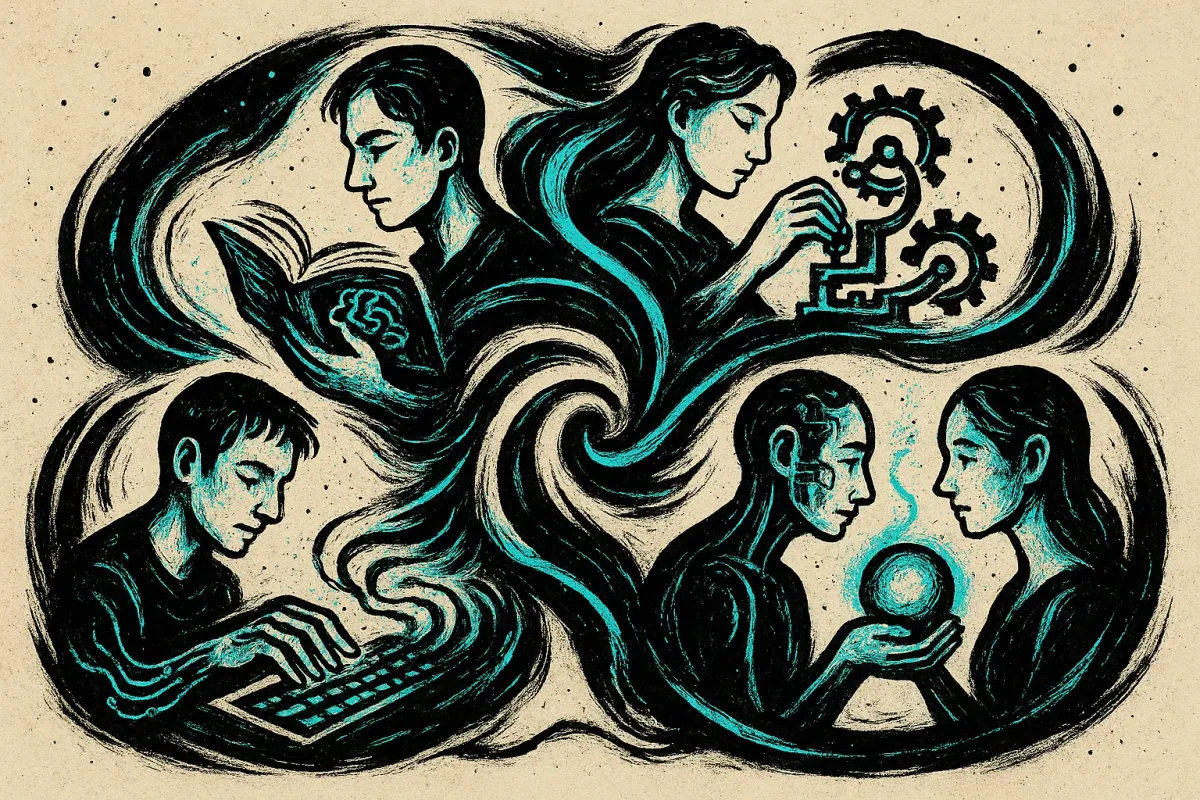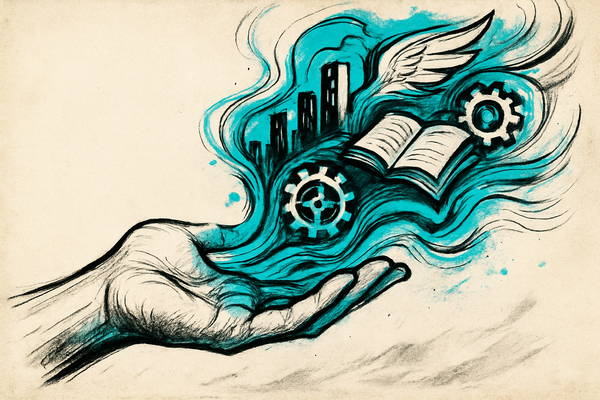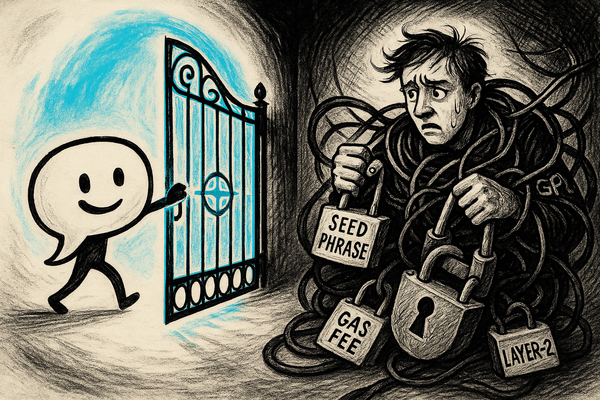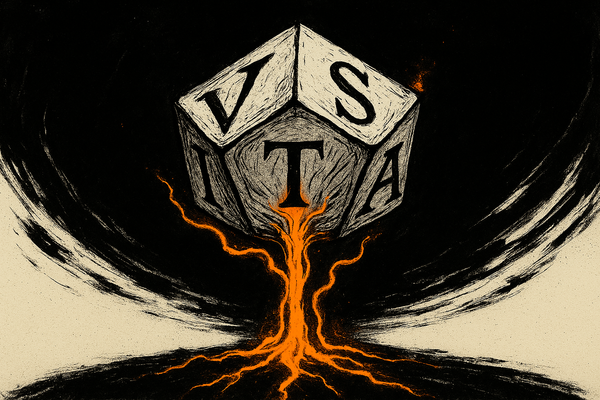Generative AI User Archetypes and Matrix

Generative AI is revolutionizing creativity and productivity across various sectors. More than a tool, it's also evolving into a fully fledged partner, as Ethan Mollick & Co state in their work on 'the cybernetic teammate'.
In my daily work I've noticed that the impact of AI impact varies significantly based on who uses it. This got me thinking more deeply about the different user archetypes and their Gen AI interaction modes.
In this article, I introduce the Generative AI User Matrix, a framework designed to help individuals and organizations understand and optimize their interactions with AI tools based on an individual's experience and urgency orientation.
Understanding the Generative AI User Matrix
The Generative AI User Matrix is a 2x2 framework that categorizes users based on two dimensions:
- Experience Level: This axis ranges from Novice to Expert, reflecting an individual's depth of domain knowledge and skill proficiency.
- Urgency Orientation: This axis spans from Immediate Results Seekers to Process Embracers, indicating whether a person prioritizes quick outcomes or values a thorough, methodical approach.
By mapping these dimensions, we identify four distinct archetypes:
| Novice | Expert | |
|---|---|---|
| Immediate Results Seekers | ⚡ The Hacker | ⚙️ The Automator |
| Process Embracers | 🌱 The Learner | 🧙 The Collaborator |
Let's delve into each archetype to understand their interaction with generative AI.
⚡ The Hacker (Novice + Immediate Results Seekers)
Profile: Individuals who lack deep domain knowledge but seek quick solutions. They often use AI to bypass learning curves and achieve immediate outcomes.
How AI Helps:
- Rapid Prototyping: Generative AI enables the quick creation of drafts or prototypes, facilitating fast experimentation.
- Idea Generation: AI assists in brainstorming sessions, swiftly providing many ideas.
Risks:
- Superficial Understanding: Relying heavily on AI may hinder the development of foundational knowledge.
- Quality Concerns: Outputs may lack depth and require thorough vetting.
Use Case Example: A fresh entrepreneur using AI to draft a business proposal quickly without extensive prior knowledge.
🌱 The Learner (Novice + Process Embracers)
Profile: Individuals who are new to a domain but are willing to invest time to understand and master it. They use AI as a learning companion.
How AI Helps:
- Personalized Tutoring: AI provides explanations and step-by-step guidance, including on how to use AI itself, tailored to the learner's pace.
- Safe Experimentation: Users can explore and make mistakes in a low-risk environment.
Risks:
- Information Overload: The vast amount of data from AI can be overwhelming.
- Dependency: There's a risk of becoming too reliant on AI for answers.
Use Case Example: A student utilizing AI to grasp complex mathematical concepts through tutoring and interactive problem-solving instead of ready-made answers.
⚙️ The Automator (Expert + Immediate Results Seekers)
Profile: Experienced professionals who seek to streamline routine tasks and enhance efficiency using AI.
How AI Helps:
- Task Automation: AI handles repetitive tasks, freeing time for strategic activities.
- Efficiency Boost: Speeds up processes without compromising quality.
Risks:
- Over-reliance: Excessive dependence on AI might lead to skill degradation.
- Blind Spots: Automating without oversight can result in unnoticed errors.
Use Case Example: A data analyst using AI to generate standard reports, allowing focus on data interpretation.
🧙 The Collaborator (Expert + Process Embracers)
Profile: Experts who engage with AI to explore new frontiers, valuing the journey of discovery and innovation.
How AI Helps:
- Co-Creation: AI serves as a partner in brainstorming and developing novel solutions.
- Deep Exploration: Facilitates thorough analysis and understanding of complex topics.
Risks:
- Overcomplication: The pursuit of perfection may lead to unnecessary complexity.
- Time Investment: Deep collaboration with AI can be time-consuming.
Use Case Example: A researcher collaborating with AI to simulate and analyze intricate scientific models as well as to challenge them and find alternative approaches.
Who are you? It depends.
Note that anyone can exhibit more than one of these archetypes. We are all deep experts in some domains and novices in others. Furthermore, we are sometimes in a hurry, but sometimes we can take our time.
This framework should always be used in context, not to box in users based on, e.g., their overall experience in generative AI or the overall nature of their work.
Practical Applications and Benefits
Understanding your position within the Generative AI User Matrix can significantly enhance both personal productivity and organizational efficiency.
For Individuals:
- Tailored Learning Paths: Recognizing your archetype helps you select AI tools and approaches that align with your learning style and goals.
- Skill Development: Awareness of potential pitfalls allows for proactive measures to build and maintain essential skills.
For Organizations:
- Optimized Training Programs: Identifying employee archetypes enables the design of targeted training, maximizing the effective use of AI tools.
- Strategic AI Integration: Aligning AI deployment with user profiles ensures that technology complements human expertise, fostering innovation and efficiency.
Testing and Validating the Framework
To ensure the robustness of the Generative AI User Matrix, consider the following validation approaches:
- Surveys and Interviews: Collect user data to assess their experiences and identify patterns aligning with the proposed archetypes.
- Case Studies: Analyze specific instances where AI integration has succeeded or failed, mapping outcomes to the matrix.
- Performance Metrics: Measure productivity, quality of output, and user satisfaction before and after implementing AI solutions tailored to each archetype.
Conclusion
The Generative AI User Matrix offers a nuanced perspective on how individuals interact with AI, emphasizing that user characteristics deeply influence the technology's impact. By identifying and understanding these archetypes, individuals and organizations can harness the full potential of generative AI, leading to enhanced creativity, efficiency, and innovation.




